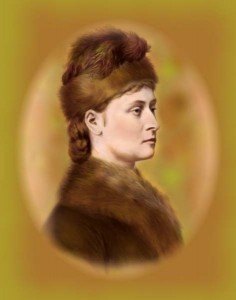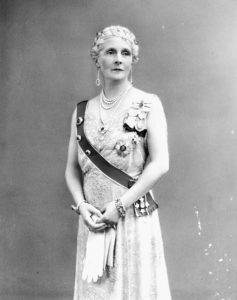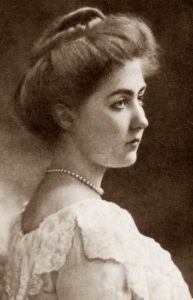My New Year’s Resolution for 2018 is to read a book (or listen to an unabridged audiobook) every day: 365 books by December 31. I will post my reviews here each week and provide regular updates on Twitter and Goodreads. Recommendations are always welcome!
Week 30: Queens and Empresses: In recent weeks, I have been reading extensively about one of my favourite topics, the political and cultural influence of royal women. I will be delivering a lecture about Catherine the Great and the Hermitage later this month as part of a royal history lecture series on a Baltic Sea cruise and I have therefore been reading extensively about Catherine’s famous art collection. I am also working on a feature article about royal wedding dresses to be published in time for Princess Eugenie’s wedding this October, and so I have been reading more about royal fashions from the eighteenth century to the present day. I also recently read three more titles from the Palgrave Macmillan Queenship and Power series. Here are this week’s reviews:
 #204 of 365 Royal Women and Dynastic Loyalty edited by Caroline Dunn and Elizabeth Carney
#204 of 365 Royal Women and Dynastic Loyalty edited by Caroline Dunn and Elizabeth Carney
Genre: History
Format: E-Book, 207 pages
Acquired: Borrowed From Robarts Library, University of Toronto
Date Read: July 25, 2018
Review: A collection of articles about royal women and their contributions to royal dynasties from classical times to the 19th century. While there are familiar figures examined in this volume, such as Mary, Queen of Scots and her son James I’s queen, Anna of Denmark, most of the contributors examine comparatively overlooked figures. There are chapters concerning Empress Elizabeth Christine (the mother of Empress Maria Theresa of Austria and the grandmother of Queen Marie Antoinette of France), and the little known royal women of the 17th century Ottoman Empire who served as stabilizing figures during an uncertain time for their ruling house.
The authors draw conclusions that continue to be relevant to the history of monarchical government, women and power, and royal court culture. For example, in her chapter on Queenship and the Currency of Arts Patronage as Propaganda at the Early Stuart Court, Wendy Hitchmough observes that royal palaces continue to be sites of national identity and memory, as demonstrated by the recent Remembrance Day poppies installation at the Tower of London and the role of Kensington Palace as a site for mourning Diana, Princess of Wales.
Since the book is based on a series of conference papers, the chapters are short and sometimes end abruptly, especially the opening chapter about King’s Daughters, Sisters, and Wives: Fonts and Conduits of Power and Legitimacy by Waldemar Heckel. I hope that the contributors will expand their research into longer articles and books as the chapters in this volume examine important and often overlooked historical figures and their contributions to dynastic legitimacy.
 #205 of 365 T
#205 of 365 T
Genre: Biography/Art History
Acquired: Purchased from Amazon.com
Format: Paperback, 480 pages
Date Read: July 25, 2018
Review:The provides a good overview of Catherine the Great’s art patronage and the development of the Hermitage Museum in Saint Petersburg. Jaques writes in an engaging, accessible style, and places the acquisition of key art collections such as the Walpole paintings within the context of the wider events of Catherine the Great’s reign. The author has visited Saint Petersburg and demonstrates a familiarity with the historic buildings of the city, Catherine the Great’s influence on architecture, and her role in setting wider cultural trends.
In addition to detailing Catherine’s cultural activities, Jaques explains the ultimate fate of the paintings acquired by the Empress. While some of Catherine’s purchases remain on display at the Hermitage museum, her grandson Czar Nicholas I sold some of the pieces that he judged to be inferior while other acquisitions were destroyed by fire or sold to the National Gallery in Washington D.C. during the Soviet period.
Unfortunately, there are some historical errors sprinkled throughout the book, especially toward the beginning and end. The errors concern names, dates, and, most often, the family relationships between royal personages. (For example, Maria Josepha was Maria Theresa’s daughter, not her daughter-in-law. A daughter of the last Byzantine Emperor did not marry a czar, as stated in the book. Instead, a niece of the last Byzantine Emperor married a Grand Duke of Muscovy, Ivan III. The title of czar was not in use until their grandson’s reign.) While these errors do not undermine Jaques’s overall argument that Catherine was a key cultural patron with a lasting legacy in a number of different spheres, they are distracting for the reader.
The is an engaging biography of Catherine the Great as a cultural patron that is especially useful for visitors to Saint Petersburg and the city’s Hermitage Museum. Includes illustrations of key paintings and architecture from Catherine’s reign.
 #206 of 365 Queenship and Counsel in Early Modern Europe edited by Helen Matheson-Pollock, Joanne Paul and Catherine Fletcher
#206 of 365 Queenship and Counsel in Early Modern Europe edited by Helen Matheson-Pollock, Joanne Paul and Catherine Fletcher
Genre: History
Date Read: July 26, 2018
Format: E-Book, 291 pages
Acquired: Borrowed from Robarts Library, University of Toronto
Review: An excellent collection of scholarly articles about how early modern queens exercised and received political counsel. The book includes fresh perspectives on Tudor and early Stuart era queens who are often reduced to one dimensional portrayals in the popular imagination.
For example, Henry VIII’s first wife, Catherine of Aragon, closely associated with her nephew Holy Roman Emperor Charles V because of the circumstances of the breakdown of her marriage, in fact had a more complicated attitude toward English foreign policy and was not always perceived as placing Spain’s interests first. Henry VIII’s sister Mary, Queen of France, famous for marrying Charles Brandon, Duke of Suffolk and incurring the King’s displeasure in fact remained closely interested in Anglo-French relations for the rest of her life, and attempted to maintain her own network of connections during her brief marriage to Louis XII. Mary, Queen of Scots paid careful attention to her household, avoiding appointing the wives of privy Councillors to attend her in a personal capacity in an attempt to separate her public and private spheres. Queen Elizabeth I made use of her classical education to affirm her authority over male Councillors.
In addition to chapters reassessing well known queens, there is analysis of little known queens consort and the manner in which they exerted political influence. The book’s focus on the early modern period allows for exploration of how royal women’s roles were passed through the generations. For example, there is a chapter about Bona Sforza, Queen of Poland followed by a chapter about her daughter, Catherine Jagiellon, Queen of Sweden, two queens consort who deserve to be more well known. The book comes together as a cohesive whole, with parallels drawn between the various queens discussed in individual sections and wider conclusions presented about the range of roles for a queen in the sixteenth century. Highly recommended for scholars and general readers interested in early modern queenship.
 #207 of 365 Queens Matter in Early Modern Studies edited by Anna Riehl Bertolet
#207 of 365 Queens Matter in Early Modern Studies edited by Anna Riehl Bertolet
Genre: History
Format: E-Book, 399 pages
Acquired: Borrowed from Robarts Library, University of Toronto
Dates Read: July 28-August 2, 2018
Review: A collection of scholarly essays dedicated to Carole Levin, the co-editor of the Palgrave Macmillan Queenship and Power book series. I am honoured that my own book is mentioned in Charles Beem’s essay concerning the development of the series, which states, “…Carolyn Harris’s Queenship and Revolution in Early Modern Europe: Henrietta Maria and Marie Antoinette, a provocative comparative study of two queens who suffered miserably at the hands of revolutionary ideologies.” The chapters are divided by theme, presenting a broad range of perspectives on early modern queenship, especially the reign of Queen Elizabeth I. I found the chapters about Elizabeth I’s role as a godparent (she had at least 114 godchildren over the course of her reign including John Harington, inventor of the flush toilet), and the comparisons between Elizabeth I and Mary, Queen of Scots especially fascinating. An interesting and informative read.
 #208 of 365 Catherine the Great: Art for Empire: Masterpieces from the State Hermitage Museum, Russia
#208 of 365 Catherine the Great: Art for Empire: Masterpieces from the State Hermitage Museum, Russia
Genre: Art History
Date Read: July 30, 2018
Acquired: Received as a Gift
Format: Paperback, 328 pages
Review: The book that accompanied the 2005 Catherine the Great exhibition at the Art Gallery of Ontario. A nice balance between beautiful illustrations of works of art collected and commissioned by Catherine the Great, and insightful essays about the different facets of her role as patron of arts. The art historians focus on the variety of different art forms in Catherine’s collection including paintings, sculpture and cameos, her motives for amassing such an extensive art collection, and the question of whether she possessed good taste or was simply a “glutton for art” who bought large collections without considering the merits of the individual works. The essays concerning her patronage of women artists including Elisabeth Vigee LeBrun and Marie-Anne Collot are especially interesting. I would have been interested to read a concluding essay about the expansion of the Hermitage museum’s collection after Catherine the Great’s reign.
 #209 of 365 The Royal Wedding Dresses by Nigel Arch and Joanna Marschner
#209 of 365 The Royal Wedding Dresses by Nigel Arch and Joanna Marschner
Genre: History and Fashion
Date Read: August 2, 2018
Acquired: Read at Toronto Reference Library
Genre: Hardcover, 176 pages
Review: A beautifully illustrated history of royal wedding fashion from Henry VII and Elizabeth of York to Prince Andrew and Sarah Ferguson. Although the title suggests that the book examines wedding dresses alone, the authors also look at the fashions worn by royal bridegrooms, bridesmaids and guests. There are some fascinating examples of royal brides adapting traditional bridal fashions to reflect their own preferences including Queen Marie of Romania choosing a tulle veil instead of the wedding lace favoured by most of Queen Victoria’s descendants, and her cousin Princess Margaret of Connaught choosing an Irish made gown embroidered with shamrocks to reflect her happy memories of spending time in Ireland as a child. I would be interested to read an updated edition that includes the last few decades of royal wedding fashion.
 #210 of 365 Marie Antoinette’s Head: The Royal Hairdresser, the Queen, and the Revolution by Will Bashor
#210 of 365 Marie Antoinette’s Head: The Royal Hairdresser, the Queen, and the Revolution by Will Bashor
Genre: History
Date Read: August 7, 2018
Acquired: Borrowed from Toronto Public Library
Format: Hardcover, 299 pages
Review: An excellent read, especially in tandem with Queen of Fashion: What Marie Antoinette Wore to the French Revolution by Caroline Weber. Bashor examines the life and hair-raising exploits of Leonard Autie, who rose from obscure origins in Gascony to become Marie Antoinette’s hairdresser and confidant. Both the hairdresser and Marie Antoinette’s milliner, Rose Bertin, became recognizable public figures in their own right and were nicknamed Ministers of Fashion, setting precedents for future celebrity stylists and fashion designers.
I especially enjoyed the chapters about the Flight to Varennes, where Leonard acted as a secret messenger for the King and Queen, and his brother may have unwittingly foiled the royal family’s plan to flee France. Leonard had a long career after the French Revolution, styling the hair of the Russian Imperial family, including the murdered Czar Paul I for his state funeral. Marie Antoinette’s Head is lavishly illustrated with images from the French archives of Marie Antoinette, her family and her famous hairstyles. Highly recommended.









 #268 of 365
#268 of 365 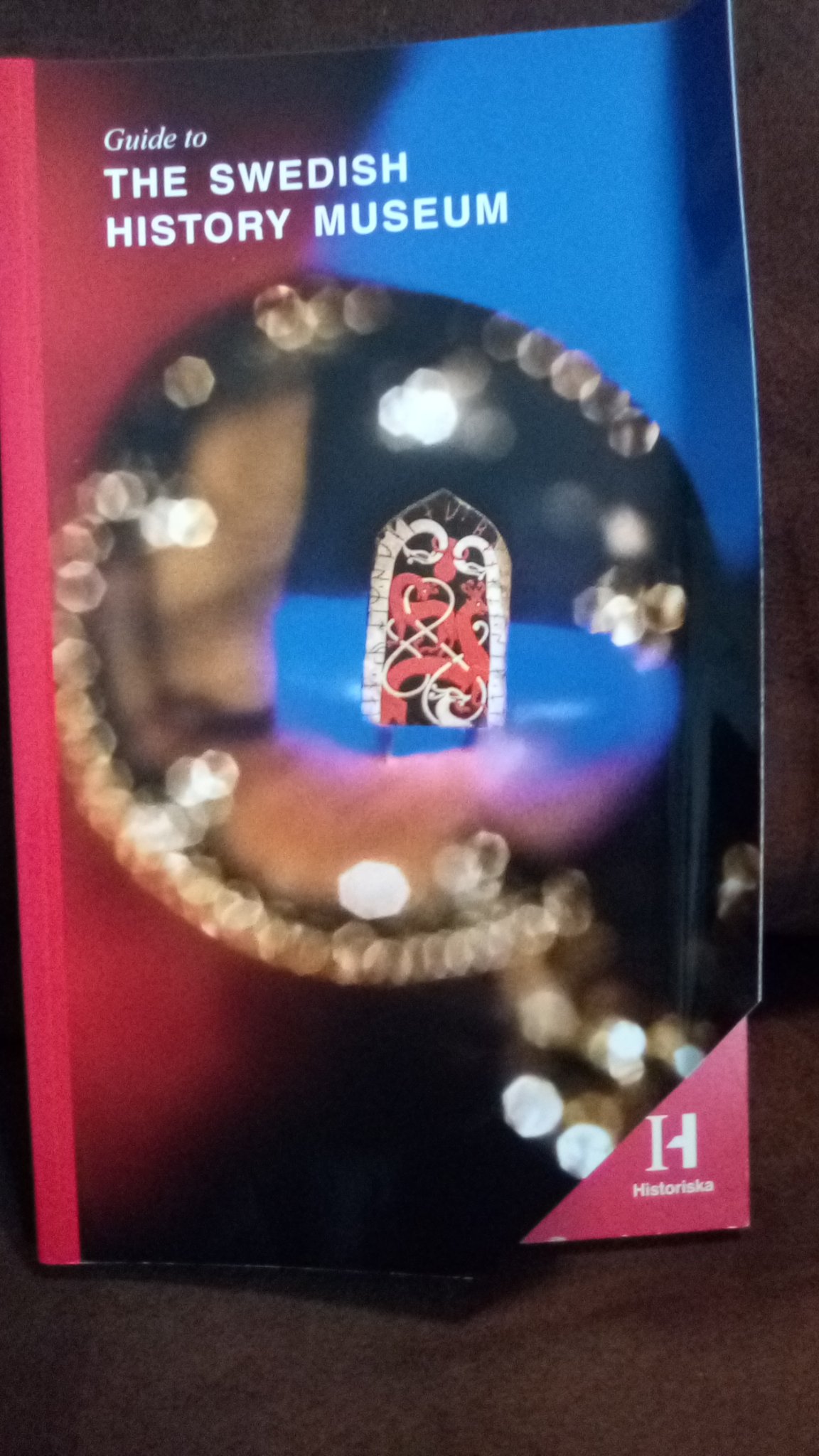 #269 of 365
#269 of 365  #270 of 365 Christiansborg Palace Guide Book by Amalie Vorting Kristensen
#270 of 365 Christiansborg Palace Guide Book by Amalie Vorting Kristensen
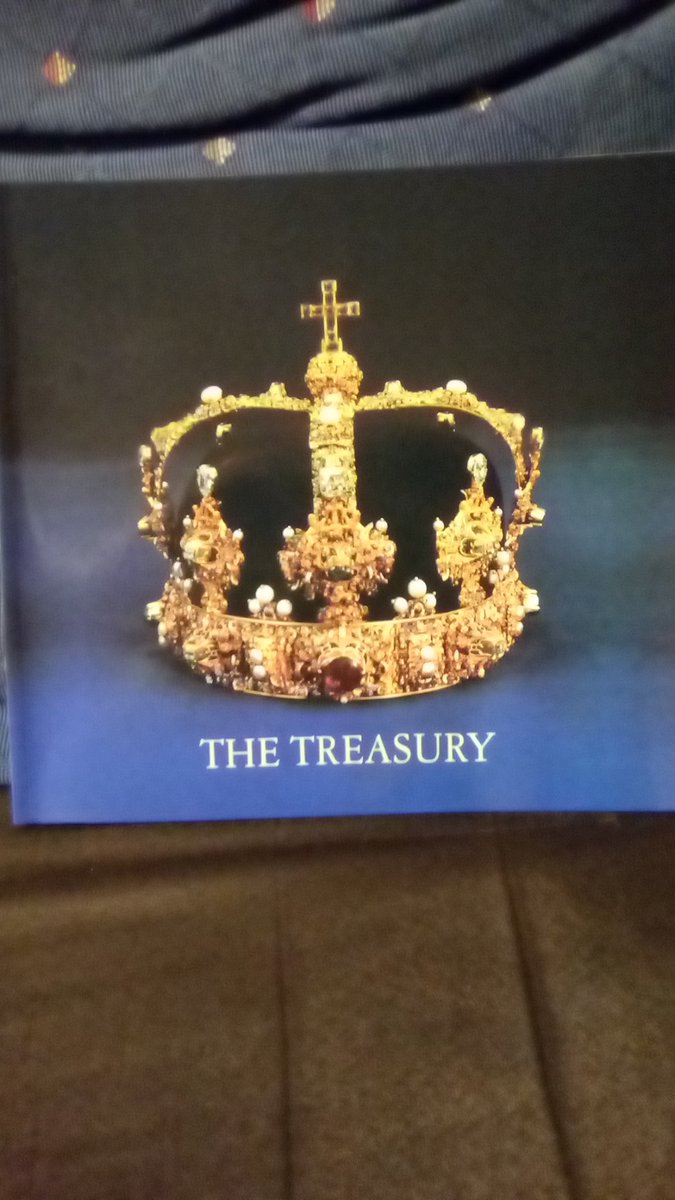 #272 of 365 The Treasury: The Regalia and Treasures of the Realm by Ulla Landergren
#272 of 365 The Treasury: The Regalia and Treasures of the Realm by Ulla Landergren





















